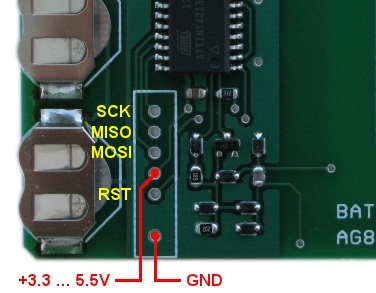Frequently Asked Questions
Contents
- Q & A
- Glossary
Q & A
Q: What NFC reader can I use this Emulator with?
A: As of 2014, the most popular NFC reader devices happen to be Android phones with NFC interface, but the choice of reader is not limited to them.Q: Why even bother making an emulator if Android might release the hidden API soon?
A: Even if Android releases the hidden API allowing MIFARE Ultralight tag emulation, full emulation will still not be possible because of two hardware restrictions of PN53x NFC interface chips found in most Android devices:- UID size will be limited to 4 bytes, thus level 2 anticollision (0x95 command) will not be supported;
- First UID byte (UID0) will be hardwired to value 0x08, which is different from 0x04 used in standard tags.
Q: Does the Emulator come with extra software?
A:Q: How long do the batteries last?
A: Because of the automatic power-saving feature, the battery current consumption when no reader field is present is more than 1000 times smaller than when the field is present. Because of that, the battery life strongly depends on the frequency of use and duration of interaction with PCD. Typical capacity of AG8 batteries is 45 mAh, while the active current consumption of the reader with full batteries is around 6 mA, resulting in at least 8 hours of continuous work in reader field. However, batteries may always run out of power unexpectedly and this can lead to firmware corruption. If this has occured to you, you most likely need to reflash Emutag in addition to getting new batteries. If the reader field is never applied, it would *theoretically* take more than 20 years to drain full batteries.Q: Is there a casing for the PCB?
A: The project is very new and there has not been much development in terms of mechanical design. However, depending on project success, there is a possibility of making a casing. The PCB dimensions have been chosen to leave 1 mm on each side for the casing in order to fit into length and width of a CR-80 card.Q: Why can't my reader (PCD) read 2 or more PICC devices, even though all of them support anticollision?
A: All passive tags and the Emulator consume power from the electromagnetic field generated by the reader. The Emulator is designed to consume almost exactly the same amount of power from the antenna as a standard MIFARE Ultralight NFC tag. Increasing the number of tags reduces the field strength, which in turn renders one or more tags unreadable due to lack of power.Q: Is it possible to design a completely passive version of the Emulator with no batteries?
A: Yes and no. Two key factors that determine the answer to this question are (1) the choice of microcontroller and (2) the reader delay timeout from PCD to PICC. It is known for a fact that in order to satisfy the standard write delay of 3.83 ms on a passive tag, it needs to use a hardware architecture allowing simultaneous write of 32 bits (4 bytes) of EEPROM. The answer would be positive if anyone found either a 32-bit microcontroller or an FPGA with such capability that also satisfies power consumption constraints. If the write delay is not critical, even a 8-bit ATMEGA family microcontroller can be used. Tests have shown that 9 ms delay works on most Android phones with NFC, and such a delay can be obtained by writing a block of FLASH memory of ATMEGA in bootloader mode.Q: Does the Emulator support NDEF?
A: Yes. NDEF is a purely software concept, it's a data structure similar to a file system on a hard disk or Flash memory device. However, NDEF format implies having non-zero data in page 3 (OTP), meaning that standard tags can be formatted to NDEF only once. The Emulator can be formatted to NDEF multiple times using its distinctive lock/unlock switch.Q: Does the Emulator support the software UID change command used in UID-changeable MIFARE Ultralight clones from China?
A: No. The idea of not supporting the backdoor command "HALT, 0x40, 0x43" is to prevent a reader from identifying the Emulator as a Chinese clone. Manually setting the hardware switch to Unlocked position is the only way to make the UID writable by standard WRITE or COMPATIBILITY_WRITE commands.Q: What chip is the Emulator based on?
A: ATtiny4313. Yes, the software has been written and optimized in a way to make it possible to use such a basic microcontroller.Q: Can I have the source code of the microcontroller firmware?
A: This is a commercial project for now,Q: Can I apply external power to the board?
A: Yes, a voltage between 3.3V and 5.5V can be applied to the programming slot in a way shown in the picture below.
WARNING! The power terminals on the programming slot connect directly in parallel with the batteries.
The batteries must be removed before applying external power. Powering the Emulator with batteries inserted will cause a high current
flow through the batteries, which can make them explode or catch fire.




